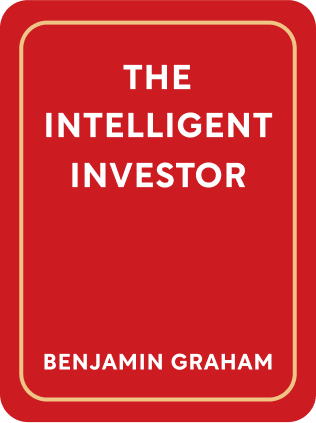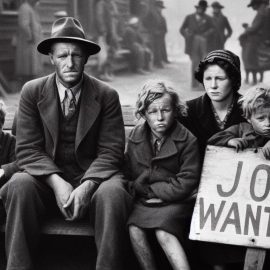

This article is an excerpt from the Shortform book guide to "The Intelligent Investor" by Benjamin Graham. Shortform has the world's best summaries and analyses of books you should be reading.
Like this article? Sign up for a free trial here .
What is active trading? Is active trading based on speculation or investment?
Active trading is when you trade often and without research. Brokerage firms often promote active trading as a way to get rich quickly, but this won’t happen for real, smart investments.
Read more about active trading and how it can affect your wealth.
Don’t Believe the Active Trading Hype
So what is active trading? You’ve likely seen commercials for stock brokerages that let you trade more conveniently and with lower fees than ever before. Beware: brokerages make money when you trade, and not when you make money. Therefore, brokerages hype up speculation for common investors in their marketing, promising riches at unprecedented speed.
(Shortform note: With the advent of mobile apps for trading and zero-commission trading, the barrier to trading is lower than ever. How do brokerages with zero commissions make money through trading? By selling order flow to market makers, who profit from inexperienced investors.)
As a result of these tools, trading activity has increased dramatically, as well as impatience—in 1973, a shareholder kept a stock for 5 years before selling it; by 2002, that shrunk over 80%, to 11 months. During frenzied periods, like the dotcom bubble in 1999, a share might be held an average of a few days.
Beyond just making poor investment decisions, active trading has other punishing drawbacks:
- A frenetic speculator who is desperate to buy or sell a stock may accept unfavorable prices for the sake of speed. For instance, someone who wants to trade 1,000 shares of a stock and misprices by 20 cents per share gives up $200.
- If you hold a stock for less than a year, any gains on that stock are taxed at ordinary income rates, rather than the lower long-term capital gains rate.
- (Shortform note: Recent research suggests that individual active traders even tend to earn below-market returns before accounting for fees—individual investors simply trade stocks poorly.)
Thus, accounting for small losses and taxes, an active trader might need to gain at least 5% just to break even.
A 2000 study by finance professors found that the most active traders (who turned over more than 20% of their holdings each month) underperformed the market by 6.4% per year, while the least active traders (trading less than 0.2% of holdings each month) matched the market.
The message is clear: “active trading is hazardous to your wealth.
Speculation Disguised as Investment
In addition to trading based on market movements, Graham cautions against these common methods of speculation that masquerade as investment:
- Trading based on short-term earnings reports: estimating future earnings accurately is already difficult in itself. But studying earnings is so common and competitive, with legions of analysts on Wall Street, that even if you get it right, the stock price probably already reflects those earnings.
- Trading based on long-term growth prospects: here you may have a more optimistic view of certain companies than the overall market. But Graham is once again skeptical that an individual investor has the insight and vision needed to consistently outperform the market on these predictions.
In his commentary, Zweig shares examples of popular formulas that failed to perform:
- The “January effect”: A strategy published in the 1980s that claimed that small stocks dip at the end of the year and rise at the beginning of the year. The explanation is that investors sell their worst stocks by the end of the year to reduce taxes; investment firms also sell falling stocks by year-end to make their annual performance look better. The January effect looked strong up until the 1980s, after which it began disappearing.
- In 1996, a money manager named James O’Shaughnessy published a simple strategy in his book What Works on Wall Street: Buy 50 stocks with the highest one-year returns, 5 years of rising earnings, and share prices less than 1.5x revenues. He created funds based around this strategy, but they underperformed the S&P 500 through 2000, and some of those funds promptly shut down.
- The Motley Fool’s “Foolish Four”: Take the five stocks in the Dow Jones with the lowest price and highest dividend yields; discard the one with the lowest price; invest 40% in the stock with the second-lowest price, and put 20% in the other three. Repeat each year. When published, the technique claimed to produce a 10.1% annual return above market in a back-test over 25 years. But when applied going forward, this failed to perform any better than random stock picking.
The takeaways:
- Strategies that seem to work when back-tested against historical data may be illusory. If you look for enough patterns, you will find some that seem to work, by mere chance, but they will fail to deliver consistent performance over time.
- Even if the strategy really does work, if it becomes popular, the competitive market will adopt the strategy, thus erasing its possibility for profit. We’ll discuss this more in the last section of the chapter.
- Any simplistic strategy that mechanically picks stocks, without thorough consideration of the company’s underlying value, does not qualify as investment under Graham’s definition.
Speculation isn’t immoral or necessarily bad for society. Speculation based on the promise of future growth fuels innovation—new upstarts like Google or Amazon needed optimistic speculators to provide capital. But for most people, speculation is a poor way to attain wealth.

———End of Preview———
Like what you just read? Read the rest of the world's best book summary and analysis of Benjamin Graham's "The Intelligent Investor" at Shortform .
Here's what you'll find in our full The Intelligent Investor summary :
- Key advice from what Warren Buffett considers the "best book about investing"
- The 2 major indicators you should use for evaluating stocks
- How you can use aggressive or defensive investing strategies





